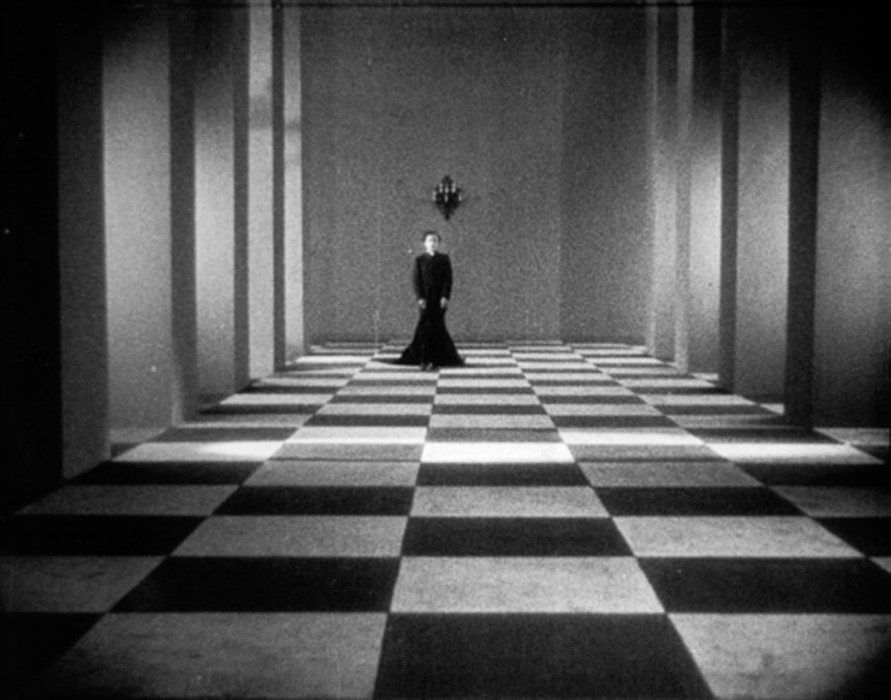As a new survey of her work begins in New York, we look again at the work of an artist often written out of film history
Who? Germaine Dulac paints an impressive picture. Suited up in black, her short bobbed hair combed smooth in a side parting, a bow tie snugly encircles her neck. A flower is clipped to her breast, one hand languishing in a cloth trouser pocket, the other propped against a table as she gazes defiantly out of the frame. Dulac was one of the first feminist film directors, a theorist, journalist, editor and photographer whose innovative techniques and sharp ideas established her as a crucial figure of the Avant Garde cinema of the 1920s. Dulac knew her worth. As a queer woman she was instrumental in putting queer bodies centre-stage on screen, and emboldening discussion of gender roles through her frequent interrogation of gender expectations in film.
Brought up in Paris by her grandmother, Dulac bought a camera when she was just ten years old. “I spent my time photographing everything I saw,” she would write later, reflecting: “I thought I possessed all the happiness in the world, in carrying over my heart a little black box, which I knew could capture the mystery of light, the blaze of the sun, the shadows and the gestures.” Dulac grew up in Belle Époque Paris, and her creative references were avant-garde dancers like Loe Fuller and Isadora Duncan. It was a time of innovation and fearlessness: Picasso painted only in blue; electric light ensured days didn’t have to end; carriages became horseless; airplanes zoomed across the sky; and most importantly, pictures began to move. Dulac’s initial love of the camera soon bound itself to ambition when, at 12, she saw the first public film projection in Le Grand Café Capucines. The encounter “left its mark”, and she soon set her mind on creating what she called “the integral film... a visual symphony made of rhythmic images”. She went on to found her own production company and direct over 30 films, documentaries and newsreels, working with everyone from Pathé to Ciné-Studios.
What? This August the Film Society of Lincoln Centre and the Cultural Services of the French Embassy in New York is showing a survey of Dulac’s work, including classics such as La Coquille et le Clergyman (The Seashell and the Clergyman) which is now heralded as the first Surrealist film. At its first screening in 1928 its impact was so great that a riot broke out at the acclaimed Studio des Ursulines, although it is debated whether it was over Dulac’s presence as a female director, or the controversial subject matter (which explores the erotic fantasies of a priest) that sparked it.
Although it’s unclear how many saw the film that night, the clipped montages of rippling water, glass breaking, breasts heaving, and the shocking subject matter provided a visual feast that evidently inspired Luis Buñuel and Salvador Dalí, who would go to release their famed Un Chien Andalou the following year. Dulac’s woman has her shirt ripped open, but her breasts are rapidly shrouded by superimposed shells. For Dalí and Buñuel the body of the assaulted woman remains bare for all to see, her breasts transformed to buttocks: there’s nowhere to hide. Dulac’s woman, however, becomes a mythical Daphne, protected by her transformations. Skilful direction ensures her neck, when grabbed, becomes a house, her face a glass bottle that breaks. In spit of the best efforts of her attacker, she remains untouched.
Why? Dulac has, until recently, often been written out of film history. With only selected films available to the public, it wasn’t until 1966 that her extensive archives were finally opened to the public and the extent of her influence realised. Dulac proclaimed that cinema was “an art that makes reality”, and she seized this potential to create the realities she wished to see in the world. She wanted her films to be born from “a shock of sensibility”, and the titles on display this summer provide ample evidence of this mission statement. A loose adaptation of Pierre Benoît’s novel L'Oublié [Forgetfulness] (1922) is directed with a final sapphic twist in her Princesse Mandane (1928). La Belle Dame sans merci (1921) depicts the dual voices of wife and mistress wronged by an affair; The Smiling Madame Beudet (1922) reveals a woman who feels trapped within marriage. Her women frequently, like Dulac herself, wear trousers; they’re flâneurs, unafraid to wander Parisian streets, smoking cigarettes, drinking alone, kissing who they want, questioning everything, and confronting rather than obeying men. Through her work, Dulac made women visible in a new way on screen. She showed female characters who subverted expectations – not playing by the rules, but directing their own story.
A survey of Germaine Dulac’s work runs at the Film Society of Lincoln Center and the Cultural Services of the French Embassy in New York from August 24-30, 2018.
